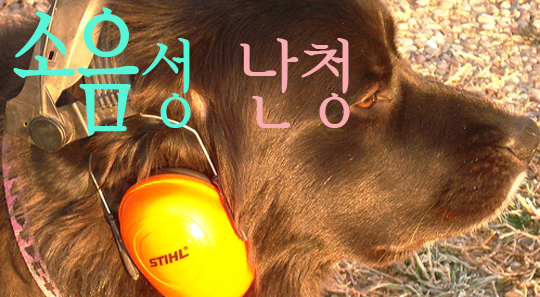
소음성 난청을 연구함에 있어서 허용되는 소음의 한계 강도는 아주 중요한 의미를 가집니다.
최근 미국의 전문관련 기관인 NIOSH (National Institute for Occupational Safety and Health)와 OSHA의 권장하는 허용 소음 한계강도가 상이한데 이에 대한 이야기를 들어보기로 하겠습니다.

9/29/2008
NIOSH and OSHA Permissible Noise Exposure Limits
Rick Neitzel, M.S., CIH

What is the difference between the NIOSH recommended noise exposure limit v. OSHA permissible noise exposure limit?

The US National Institute for Occupational Safety and Health (NIOSH) has a recommended standard for all industries (Centers for Disease Control and Prevention/NIOSH publication 98-126). This standard specifies an 85 dBA Recommended Exposure Limit (REL), and makes specific recommendations on the key elements of an effective hearing conservation program. The NIOSH standard is consistent with the exposure guidelines used by most scientific and regulatory bodies internationally, but NIOSH is not a regulatory agency and thus the standard is not mandated by law. It is designed to represent best scientific practice.
The US Occupational Safety and Health Administration (OSHA) exposure limit is regulatory – this is law and must be complied with. The NIOSH and OSHA limits are the two commonly used in the United States.
The graph below compares these two limits. As you can see, OSHA permits a worker to be exposed to 85 dBA for an allowable time of 16 hours per day. The NIOSH recommended allowable time for 85 dBA is 8 hrs per day. In addition to using a lower exposure limit than OSHA, the NIOSH standard uses a more protective 3 dB exchange rate that results in shorter allowable exposures at high noise levels than those of the OSHA regulation. For example, OSHA permits an exposure to 105 dBA for one hour per day, while NIOSH recommends that such an exposure last less than 5 minutes.
Hearing conservationists may be surprised to learn that neither the OSHA nor NIOSH limit is designed to protect every worker from suffering any NIHL. However, the NIOSH standard is the more health-protective limit of the two. For example, NIOSH estimates that approximately one in four workers exposed at the 90 dBA OSHA PEL eight hours per day over a 40 year working lifetime will suffer a compensable hearing loss from noise, compared to only about one in twelve workers exposed at the 85 dBA NIOSH REL.

Rick Neitzel is a Research Scientist in the University of Washington (UW) Department of Environmental and Occupational Health Sciences and a Certified Industrial Hygienist. He is also a Candidate in the Environmental and Occupational Hygiene PhD program at UW. He is President-Elect of the National Hearing Conservation Association, having previously served as Director of Communications and Treasurer, and sits on the Noise Committee of the American Industrial Hygiene Association. His research interests include quantitative and subjective exposure assessment in industrial and non-occupational settings, as well as development and evaluation of effective occupational health interventions.
'청각학 이야기 > 소음성 난청' 카테고리의 다른 글
| [산업청각학] 항공기 소음강도의 측정 단위는? (0) | 2008.11.07 |
|---|---|
| [산업청각학] 소리의 크기를 나타내는 단위 등가소음레벨(Leq, Equivalent Noise Level) 개념 (0) | 2008.11.07 |
| [소음성난청] 왜 시끄러운 장소에서의 음악청취(MP3를 위한 이어폰 사용은 위험한가? (0) | 2008.10.11 |
| `남해고속도로가 마을사람들의 원수야` (0) | 2008.10.09 |
| 방음보호구 성능검정 규정 (0) | 2008.10.09 |
